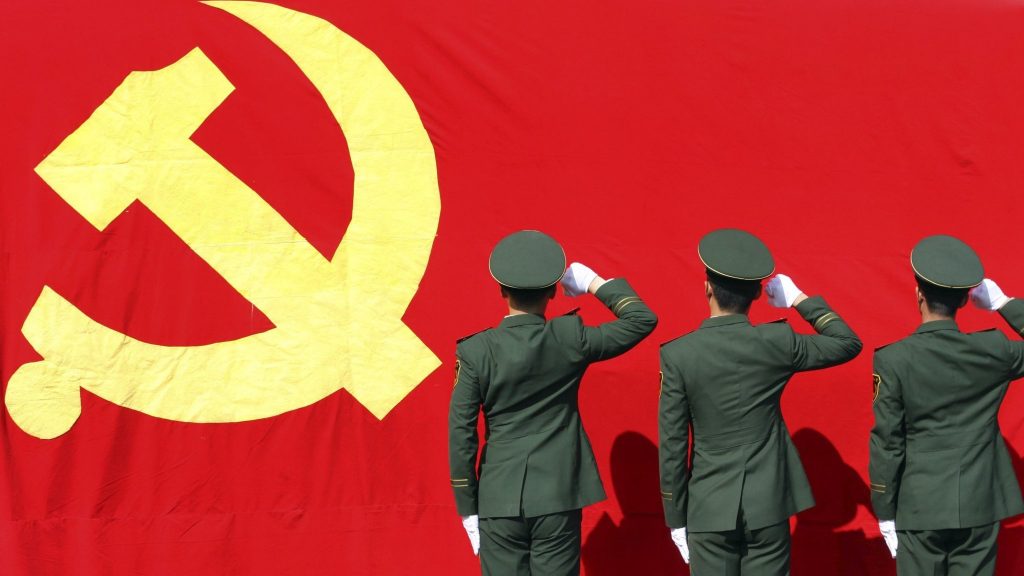Editorial note: WSJ editorial board finally, finally admits to China’s predatory trade. But tariff freak out still takes precedence. Proposes slow, ineffective, international bureaucrat action.
The Trump Administration is expected to announce more tariffs as early as this week in an attempt to reduce China’s trade surplus with the U.S. While these taxes are a mistake, as is Mr. Trump’s obsession with trade deficits, there’s no denying that Beijing’s mercantilism has fueled the political backlash against free trade.
[The Editorial Board | March 20, 2018 | WSJ]
The Trump Administration is expected to announce more tariffs as early as this week in an attempt to reduce China’s trade surplus with the U.S. While these taxes are a mistake, as is Mr. Trump’s obsession with trade deficits, there’s no denying that Beijing’s mercantilism has fueled the political backlash against free trade.
China’s increasingly predatory behavior, especially intellectual-property theft, poses a particular problem to a sustainable trading system. The question is how to respond in a way that encourages better Chinese behavior without harming the global economy and American companies and workers. It isn’t clear that the Trump Administration has given this much careful thought, and the danger is a tariff tit-for-tat that harms everyone.
U.S officials say tariffs will provide leverage to get China to agree to change its behavior. But past experience suggests that Beijing is more likely to respond in kind at such a broad public assault on its goods. China’s accession to the World Trade Organization (WTO) in 2001 initially led to lower tariffs, but its recent record of noncompliance is miserable. Nontariff barriers and subsidies have proliferated.
The experience of foreign companies doing business in China shows there is a better approach than broad and scattershot tariffs. Instead of relying on contracts, they constantly monitor the behavior of their Chinese joint-venture partners and suppliers. When problems arise, they take immediate, proportionate action to restore mutual respect and trust.
How would this model apply to trade? First consider how Beijing has turned to mercantilism over the last decade. In 2011 the Chinese government picked seven “strategic emerging industries” to support with public investment. The plan called for the industries to grow to 15% of GDP by 2020, up from 5% in 2010. The government gives subsidies in several forms, including loans from state-owned banks on easy terms and low interest rates.
Four years later the initiative grew into the “Made in China 2025” plan, which seeks to make China the global leader in 10 industries, including electric vehicles and biotechnology. Along with subsidies and government help in acquiring foreign companies, the policy explicitly requires foreign companies to transfer intellectual property in return for access to the Chinese market. The goal is to reduce the foreign-supplied value in Chinese manufactured goods below 30%.
Beijing has also stepped up its use of regulations to discriminate against foreign companies. For example, officials use the 2008 Antimonopoly Law to pressure firms to transfer intellectual property that gives them a dominant market position in China.
All of these policies violate WTO agreements, but China’s trading partners have struggled to bring cases at the WTO. Chinese officials threaten to retaliate against foreign companies if they participate in complaints. The organization’s rules on how to enforce its agreements are outdated and lawsuits proceed slowly.
Bringing cases can still have value, but another mechanism is needed to deter Beijing’s protectionism without destroying the WTO. That mechanism would quickly identify Chinese policies that break trade agreements, coordinate with the governments of other affected economies and come up with responses that would be withdrawn once Beijing backs down.
The remedies should be based on the principle of reciprocity. If Beijing pressures multinational car companies to build electric cars in China, the U.S., EU and Japan could impose a tariff on Chinese-made vehicles and restrict the transfer of related technology.
This would avoid the Trump Administration’s approach of tariffs on a wide variety of goods, a policy that alienates allies and raises the risk of a wider trade war. A targeted approach would limit damage to the U.S. economy, since affected industries would remain open to competition from other countries. It could even strengthen the WTO as China would have an interest in modernizing and using the organization’s courts to resolve the disputes.
***
We believe in the free-trade principle that if China wants to subsidize cheap goods for U.S. consumers, then Americans benefit at the expense of Chinese taxpayers. The damage from cheaper Chinese goods since Beijing entered the WTO is overstated and in any case is mostly complete. Tariffs on Chinese goods won’t rebuild U.S. industry and are likely to shift foreign production to other countries that will still export to the U.S.
The China problem now is the predatory use of government power to punish foreign competitors to benefit Chinese companies. These columns have warned China for years that this behavior has eroded goodwill in the U.S. and Europe, and it now threatens political support for free trade. This justifies some U.S. government response.
The Trump Administration is right to take a tougher line, but it also needs a smarter approach than its new steel and aluminum tariffs. The Chinese think strategically for the long term, and so should the U.S.













